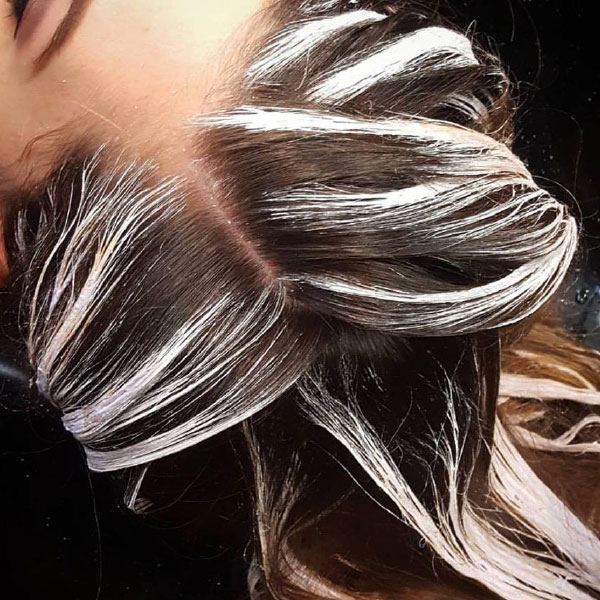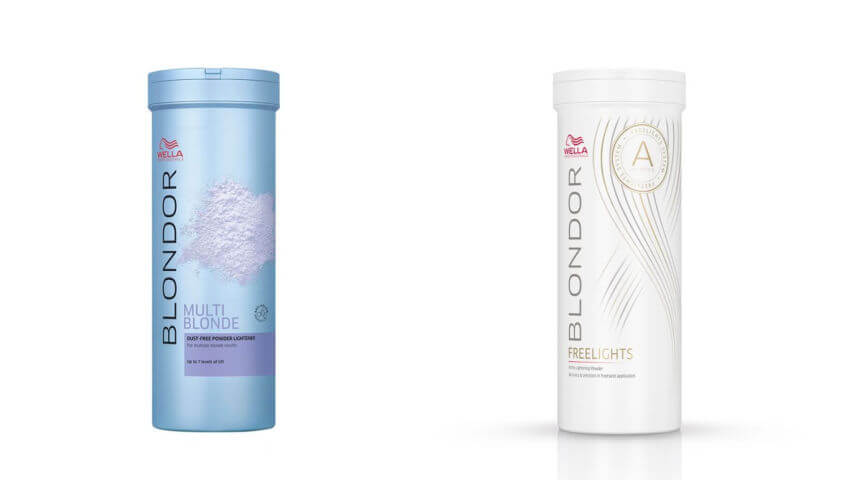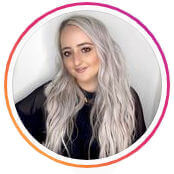
Once practically unheard of, pretty much every hair colour client you have has now probably toyed with the idea of balayaging their hair.
Balayage suits almost anyone, thanks to its natural placement, flattering tones and low maintenance. It can even be applied on any base colour, whether you want to lighten or add lowlights to the hair.
But, while it’s one of the most popular colour services out there, many stylists still struggle with perfecting their balayage technique.
Click here to skip to @dasiy_goord’s pro balayage tips!
So, what exactly is balayage?
Going back to basics, let’s just take another look at what balayage hair actually is.
First of all, remember that balayage is a technique, not an end result. Instead of using foils, balayage is the process of painting lightener onto the hair freehand, creating highlights, dimension and depth that is personalised and beautifully blended.
This means that balayage can look different on every client. So, it’s important that you are sure exactly what your client means by ‘balayage’ when they ask for it.
Balayage vs ombre, foilyage and babylights … what’s the difference?!
As balayage is such a versatile technique, clients and even stylists can get confused with the number of different versions out there!
For example, ombre is a style that can be created using a balayage technique. It’s a horizontal colour placement that gradually blends together the colour of the roots and ends.
You might also have heard of foilyage. This can add a little confusion, as it involves painting the colour on as you would during a balayage, but then wrapping each section in foil. You might want to do this if you need extra lift, either for dark hair or if you want to take your highlights to the max.
Finally, babylights are often thrown into the mix, too. These are like traditional highlights, but take in smaller sections of hair for a more subtle, natural and low-maintenance option – think baby blonde hairs from the sun.
View this post on Instagram
What balayage techniques are there?
There are numerous balayage techniques to try and it can take a long time for you to perfect yours. Top balayage artists know how to use each one to create unique levels of brightness and dimension to suit each individual client.
The most common balayage placement techniques are:
- ‘V’ placements
- ‘W’ placements
- Slants
- Gradients
Most colourists start their balayage in the middle of the hair section, sweeping upwards towards the root to avoid a noticeable colour line.
Knowing the result each balayage placement creates, and when it’s best to use them, is key to perfecting your technique.
So, we asked @Daisy_Goord for her expert tips on how to balayage like a pro!
Hi Daisy! What would you say is most important to ask clients during a consultation before their balayage?
My top tip for consultations is ask your client to bring pictures of what they do and don’t like. Knowing what they don’t like is just as important!
I find having a visual of what they want to achieve makes my life so much easier because their idea of platinum blonde might be something completely different to what I visualise.
Do you have any tips for sectioning and colour placement with balayage?
Work with the hairs natural growth pattern and section accordingly. Ask your client if they wear their hair up a lot, do they flip their parting or always wear it straight? These are all things to consider before going in with your balayage.
View this post on Instagram
Do you have any advice on painting the hairline and money piece to perfection?
Again work with the natural hairline. Some people have really deep recession points and if you leave that out they’ll end up with a dark spot either side of their face frame. If you’re ever unsure, pull their hair back like they would into a ponytail and look at the points you need to hit.
How do you create the perfect balayage colour and tone for your client?
It’s all about formulating correctly! So many people think one formula suits all but every single of my clients gets their own personal toner cocktail. Think about what you want to do; do you want to fight yellow, add warmth, kill orange? Is their hair porous? Do they want ash? There are sooooo many things to consider before jumping in with your toner.
What is your favourite lightener to use for a balayage?
My do-or-die is Wella Blondor & Wella Freelights. The texture is THE BEST and they don’t bleed at all!

What would you say the most common mistake is when it comes to balayage and how would you avoid it?
Just as one toner doesn’t suit all, one technique doesn’t suit all either. Loads of hairdressers have their comfort zone and we tend to stick in it out of pure habit. I’ve learnt to break out of your comfort zone and try new techniques.
I can be doing one client and use 4 or 5 different techniques on one head (free hand, babylights, foilayage, tip out, teasey lights etc) to give the best possible result. The worst thing we can do is become stale and not personally tailor colours – clients love to feel special so make sure you’re giving them something different to any other stylist.
Looking for the best products for your balayage? Shop all of our professional hair colour & hair bleach online now at Salons Direct!
You might also like these posts from the Salons Direct blog…
Your Essentials for Dealing With “Bleached Hair Gone Wrong” | Meche or Foils: What’s the Difference When Colouring Hair? | The Bestselling Professional Hair Colour You NEED to Try



